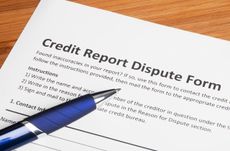Balance-Transfer Cards Can Save Thousands
Lowering your credit card interest rate and boosting your monthly payments can shave thousands of dollars off your bills and eliminate months of repayments.

I read your column last week, Using Balance-Transfer Cards to Pay Holiday Bills. How much money can I save if I switch to a card with a lower interest rate or increase my monthly payments?
The amount you can save by transferring your balance to a lower-rate card -- or convincing your lender to reduce the rate on your current card -- depends on your old and new interest rate and how much you pay each month. But combining the steps of lowering your interest rate and boosting your monthly payments could shave thousands of dollars off your bills and eliminate months -- or even decades -- of repayments.
Let's say you have a $5,000 balance at 18% interest and you make just the minimum payment of 2% of the balance each month. It will take you more than 39 years to pay off your balance, during which time you'll pay more than $13,000 in interest. Credit-card companies must now disclose on your monthly statements how long it will take to pay off your balance if you make only the minimum payment, as well as how much you'll pay in total interest over that time. "It's so long, some people think it's a mathematical error," says John Ulzheimer, president of consumer education for SmartCredit.com.

Sign up for Kiplinger’s Free E-Newsletters
Profit and prosper with the best of expert advice on investing, taxes, retirement, personal finance and more - straight to your e-mail.
Profit and prosper with the best of expert advice - straight to your e-mail.
One reason it takes so long to pay off the balance is that minimum payments are generally based on a percentage of the balance, not a fixed dollar amount. That means the amount you pay every month shrinks as your balance is reduced. In this example, the minimum payment of 2% of the $5,000 balance begins at $100 in the first month, but gradually decreases every month as you start to pay off the balance. After two years, for example, your minimum monthly payment has gradually shrunk to $89, with only $22.28 of the monthly payment going toward the principal -- stretching out the time it takes to pay off the debt and making the interest paid on the debt nearly three times the original amount you charged.
Just boosting your payments to a fixed $200 per month can make a huge difference. You'll retire the balance in about 2.7 years and pay a total of $1,314 in interest -- even if you continue to pay off the debt at the original 18% interest rate. Combining a larger monthly payment with a lower-rate balance transfer can get you out of debt even faster. Lowering the rate to 7% and paying $200 per month, for example, will get you out of debt in 2.3 years, with a total of $420 in interest. At a 0% interest rate, you'll discharge the debt in just over two years and pay no interest at all.
Even if you don't qualify for a 0% interest rate, make the most of any lower rate you can get through a balance-transfer offer or by negotiating with your existing credit card company. And, if possible, increase your monthly payments. If you have a 7% interest rate and make payments of $500 per month, for instance, you'll pay off the $5,000 debt in the example above in less than a year and surrender only $167 in interest.
To run the numbers for your own situation, see the What's the Real Cost of Paying the Minimum calculator.

As the "Ask Kim" columnist for Kiplinger's Personal Finance, Lankford receives hundreds of personal finance questions from readers every month. She is the author of Rescue Your Financial Life (McGraw-Hill, 2003), The Insurance Maze: How You Can Save Money on Insurance -- and Still Get the Coverage You Need (Kaplan, 2006), Kiplinger's Ask Kim for Money Smart Solutions (Kaplan, 2007) and The Kiplinger/BBB Personal Finance Guide for Military Families. She is frequently featured as a financial expert on television and radio, including NBC's Today Show, CNN, CNBC and National Public Radio.
-
 Stock Market Today: S&P 500, Nasdaq Extend Losing Streaks
Stock Market Today: S&P 500, Nasdaq Extend Losing StreaksThe two indexes have closed lower for five straight sessions.
By Karee Venema Published
-
 Save Over $40 on Audible With Amazon's Latest Deal
Save Over $40 on Audible With Amazon's Latest DealAmazon’s latest promotion lets you score three months of Audible for just $0.99 a month.
By Erin Bendig Published
-
 Credit Report Error? They All Matter
Credit Report Error? They All Mattercredit & debt Don't dismiss a minor error. It could be the sign of something more serious.
By Kimberly Lankford Published
-
 Insurance for a Learning Driver
Insurance for a Learning Driverinsurance Adding a teen driver to your plan will raise premiums, but there are things you can do to help reduce them.
By Kimberly Lankford Published
-
 529 Plans Aren’t Just for Kids
529 Plans Aren’t Just for Kids529 Plans You don’t have to be college-age to use the money tax-free, but there are stipulations.
By Kimberly Lankford Published
-
 When to Transfer Ownership of a Custodial Account
When to Transfer Ownership of a Custodial Accountsavings Before your child turns 18, you should check with your broker about the account's age of majority and termination.
By Kimberly Lankford Published
-
 Borrowers Get More Time to Repay 401(k) Loans
Borrowers Get More Time to Repay 401(k) Loansretirement If you leave your job while you have an outstanding 401(k) loan, Uncle Sam now gives you extra time to repay it -- thanks to the new tax law.
By Kimberly Lankford Published
-
 When It Pays to Buy Travel Insurance
When It Pays to Buy Travel InsuranceTravel Investing in travel insurance can help recover some costs when your vacation gets ruined by a natural disaster, medical emergency or other catastrophe.
By Kimberly Lankford Published
-
 What Travel Insurance Covers When Planes Are Grounded
What Travel Insurance Covers When Planes Are GroundedTravel Your travel insurance might help with some costs if your trip was delayed because of the recent grounding of Boeing 737 Max planes.
By Kimberly Lankford Published
-
 Ways to Spend Your Flexible Spending Account Money by March 15 Deadline
Ways to Spend Your Flexible Spending Account Money by March 15 Deadlinespending Many workers will be hitting the drugstore in the next few days to use up leftover flexible spending account money from 2018 so they don’t lose it.
By Kimberly Lankford Published